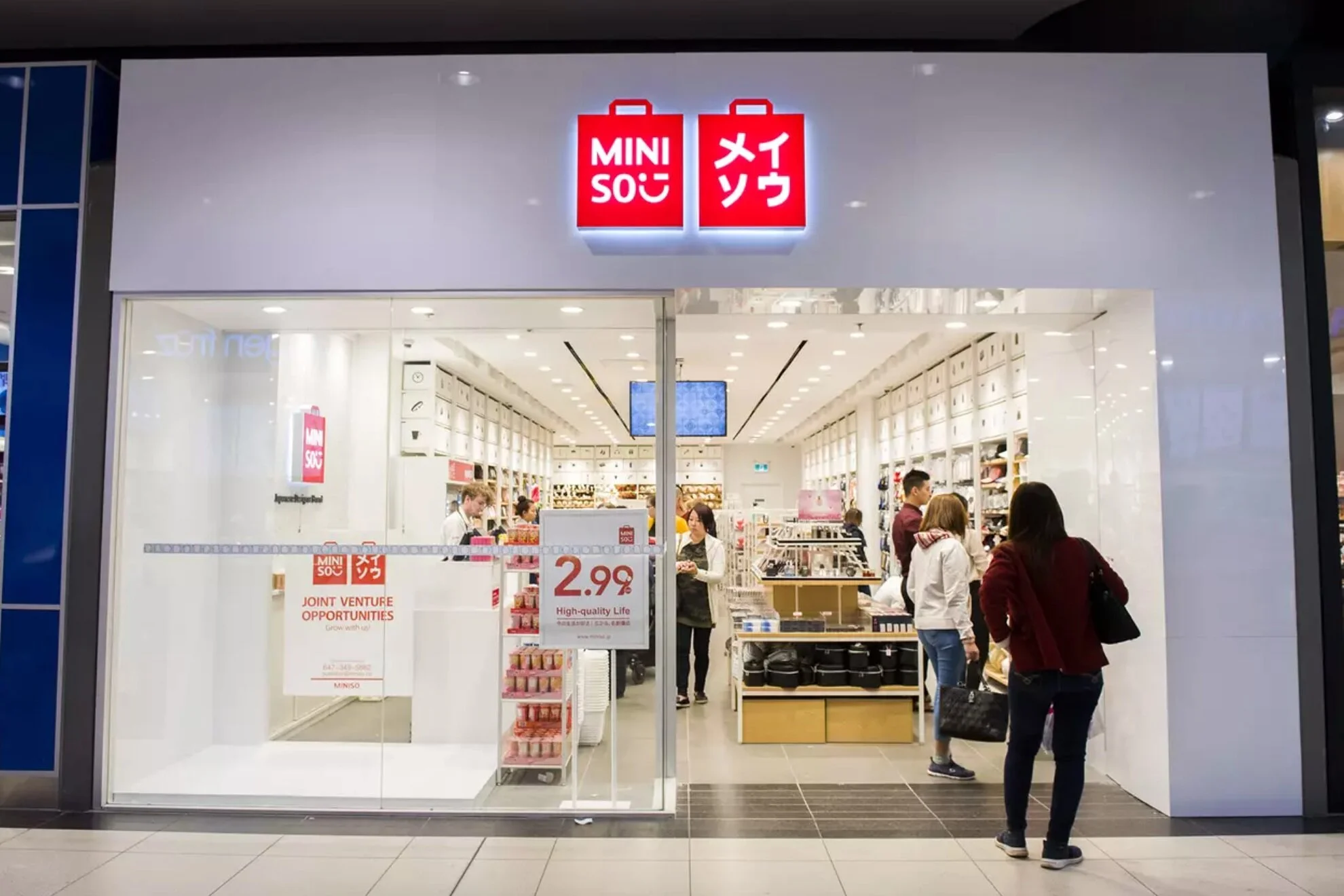Union Station Unveils Impressive Food Court as Part of Multi-Year Mega-Development
/‘Video Cube’ at the centre of the new food court. Photo: Craig Patterson
By Craig Patterson
The busiest transit hub in Canada, Union Station in Toronto, is undergoing a multi-year overhaul that is adding commercial uses to the historic property. The latest phase to be unveiled is Union Station’s new food court, featuring 10 new tenants in a dramatic 25,000 square foot space featuring unique ceiling orbs and ample digital signage.
The Union Station Food Court was made possible by excavating below the water level to create a space featuring high ceilings, including a central area visible from Union Station’s concourse level. The excavation has created space for two new transit concourses as well as a new lower-level retail concourse, and the food court is the first part of this level to become available to the public.
Two escalators provide access down to the food courts from the GO York Concourse as well as the York West Teamway which will make the food court busy at various times of the day — more than 300,000 people pass through Union Station daily, making it twice as busy as Toronto’s Pearson International Airport.
Escalators leading from the concourse to the new food court. Photo: Craig Patterson
Photo: Spring Morris
"The Union Food Court is the latest of multiple retail offerings we have brought to Union this year”, said Lawrence Zucker, President and CEO of Osmington, Union Station's retail developer. “Together with our full-service restaurants, independent retailers and ongoing free programming throughout the Station, we invite visitors and residents to come down to experience the new Union."
Seating capacity for the Union Station Food Court is 600 and the new food retailers include the following:
Bangkok Buri
Loaded Pierogi
McDonald’s
Paramount Fine Foods
Pizza Pizza
Roywoods
Scaccia
Shanghai 360
Sushi Shop
Tim Hortons
Design firms DIALOG, in collaboration with PARTISANS and retail design consultants GH+A, were responsible for designing the space.
Beauleigh Retail Consultants has been working in partnership with Osmington to conceptualize and create a mix of retail and food and beverage at Union Station that will not only be compelling to visitors and commuters, but also to the immediate area which is seeing an incredible population explosion in new residential towers.
Digital signage for each tenant adds a dynamic element to the new dining floor and other digital signage is found throughout, including a large four-screen ‘cube’ at the centre that can be utilized to broadcast everything from brand messaging to live-streaming major events. Lighting throughout can be manipulated depending on theme — the colour blue might be used for a Toronto Maple Leafs game, and green for St. Patrick’s Day, for example.
As well, the space features speakers throughout to play music, and there’s an on-site Toronto Public Library kiosk.
Immediately to the east of the new food court will be a market food hall that will open next year, spanning about 50,000 square feet. To quote the Union Station website: “Heading home and don’t know what to eat tonight? Thinly sliced charcuterie, farm-fresh veg, crispy baguette, and a bottle of Ontario pinot noir are begging to be brought home and served up.” When open, Union Station will become a foodie destination for the city and over the past year as well, the complex has added several new full-service restaurants to the mix.
Opening soon as well will be beer hall/sausage concept WVRST, in the adjacent York Street Promenade near a set of escalators leading down to the food court.
Union Station’s multi-year revitalization is being led by the City of Toronto, and the massive project involves both restoring heritage elements as well as transforming the station into a major multi-use destination. The revitalization is an $800-million City initiative supported by investments of $164 million from the Government of Canada and $172 million from the Government of Ontario. In 2009, Osmington (Union Station) Inc., a subsidiary of Osmington Inc., entered into an agreement with the City of Toronto to become the retail developer of Union Station with a 75-year head lease.
The Union Station Food Court, as well as other dining and retail options, will serve commuters as well as the rapidly growing neighbourhood surrounding Union Station. Some new towers east of Yonge Street will be nearly 100 storeys tall, in an area that will only get busier as everything comes together.
Rendering of the future Fresh Market, via PARTISANS
Over the past several years, Union Station has been under construction — the heritage complex is being restored, and retail is being added in order to serve the busy area. The ”Front Street Promenade" is considered to be Union Station’s ‘main street’ as tenants are skewed towards local retailers. The goal is to convey to visitors to the station a ‘sense of Toronto’ at Union, reflecting unique offerings throughout the city. Several retail spaces in the Front Street Promenade were unveiled in early 2018, housing an innovative grouping of local retailers and restaurants. Included are tenants such as Danish Pastry House, Naked Beauty Bar, Peace Collective, Pilot Coffee, and CXBO Chocolate. More recently, Union Station’s Front Street Promenade added tenants including Forno Cultura, Greenhouse Juice, Calii Love, and The Detox Market. A 300-square foot pop-up space houses various tenants -- in September, Louis Vuitton hosted a pop-up in conjunction with an exhibit outside of Union Station facing Front Street.
Being a busy commuter hub, restaurants are also being added — Amano and Union Chicken both opened last December in the "York Street Promenade", as well, and both are already packed daily, particularly for lunch time.
Union Station is a remarkable transit hub, serving 300,000 weekday passengers via commuter Metrolinx’s GO Trains, GO busses, and UP Express to Pearson Airport, as well as a busy TTC subway station, VIA Rail, and the PATH (indoor walkway system connecting buildings). The Air Canada Centre sports facility is connected to Union Station to the south, serving fans of hockey, basketball, and various musical and entertainment-related performances and events.
Union Station already gets more than 63 million annual visitors — that’s 13 million more than CF Toronto Eaton Centre, which is considered to be North America’s busiest shopping centre. With a significantly projected increase in employment and residents in the area, Union Station’s visitor numbers are expected to spike even more.
Office towers employing thousands surround Union Station and during rush hour, the area is densely packed (as is the case for game nights, as well). The Toronto Convention Centre is nearby as is the CN Tower, Ripley’s Aquarium and various other attractions — in many respects, Union Station is a significant city destination and it will be getting considerably busier as more office buildings are built nearby, more people utilize public transit, and thousands more people move into the area, which has gone from being sleepy to vibrant in less than a decade.
Photo: Spring Morris
A forest of skyscrapers is sprouting up south of Union Station as well as east of Yonge Street. Many of the new neighbourhoods will be connected directly to Union Station via the city’s indoor pedestrian PATH system, and Union Station anticipates becoming something of a neighbourhood retail and social hub for those living nearby. Already, thousands have moved into new condominium towers in the adjacent South Core area, with thousands more workers housed in new office towers that have been sprouting up in the area.
One significant project that is expected to bring between 15,000 and 20,000 more employees into Toronto's downtown core is the new CIBC Square, being developed by Ivanhoé Cambridge. There will be two towers: a tower at 81 Bay Street will be completed in 2020 along with a new park, and a second tower is set to be completed by 2023.
Union Station’s updated ‘Bay Street Promenade’ will eventually house more national retailers. Given its positioning on Bay Street, this part of Union Station will feature ‘more popular’ brands — the reasoning is that more commuters will be time pressed passing through this area, giving them less time to explore and discover the local brands housed elsewhere in Union Station, according to Beauleigh.
The Great Hall, considered to be one of Canada’s most iconic ‘urban rooms’, will act as an anchor to the centre — at the corner of Front Street and Bay Streets will be a signature restaurant, boasting a contemporary interior and a heritage facade.
The multi-phase, multi-year Union Station transformation will ultimately end up anchoring one of the most vibrant urban areas in North America, as Toronto’s Central Business District solidifies its position as a world-class centre. More phases are planned at Union Station, and we’ll be following up and reporting on new developments periodically.
Craig Patterson, now based in Toronto, is the founder and Editor-in-Chief Retail Insider. He's also a retail and real estate consultant, retail tour guide and public speaker.
Follow him on Twitter @RetailInsider_, LinkedIn at Craig Patterson, or email him at: craig@retail-insider.com.




















![Uniqlo Opens Massive Downtown Montreal Flagship as it Enters the Quebec Market [Photos]](https://images.squarespace-cdn.com/content/v1/529fc0c0e4b088b079c3fb6d/1603643563549-N7OOPD8K3JVF0G6DLGM0/UNIQ2.jpg)


![Menswear Retailer ‘Ernest’ Unveils New Concept Store in Montreal Following Creditor Protection Filing [Photos]](https://images.squarespace-cdn.com/content/v1/529fc0c0e4b088b079c3fb6d/1602520699510-3I83BVKV8EOISK5JSSVF/IMG_8551.jpg)
![Louis Vuitton Opens Impressive Yorkdale Flagship Store in Toronto [Photos]](https://images.squarespace-cdn.com/content/v1/529fc0c0e4b088b079c3fb6d/1602002161060-J2L2MR58BPZEBMCAP507/Michael_Muraz_-_Louis_Vuitton_Yorkdale_01C.jpg)

![Retail-insider-NRIG-banner-300-x-300-V01-3[2].jpg](https://images.squarespace-cdn.com/content/v1/529fc0c0e4b088b079c3fb6d/1593476525034-QRWBY8JUPUYFUKJD2X9Z/Retail-insider-NRIG-banner-300-x-300-V01-3%5B2%5D.jpg)
![Retail-insider-NRIG-banner-300-x-300-V01-2[2].jpg](https://images.squarespace-cdn.com/content/v1/529fc0c0e4b088b079c3fb6d/1593476491497-W6OZKVGCJATXESC9EZ0O/Retail-insider-NRIG-banner-300-x-300-V01-2%5B2%5D.jpg)
![Retail-insider-NRIG-banner-300-x-300-V01-4[2].jpg](https://images.squarespace-cdn.com/content/v1/529fc0c0e4b088b079c3fb6d/1593476508900-TJG5SNQ294YNOCK6X8OW/Retail-insider-NRIG-banner-300-x-300-V01-4%5B2%5D.jpg)